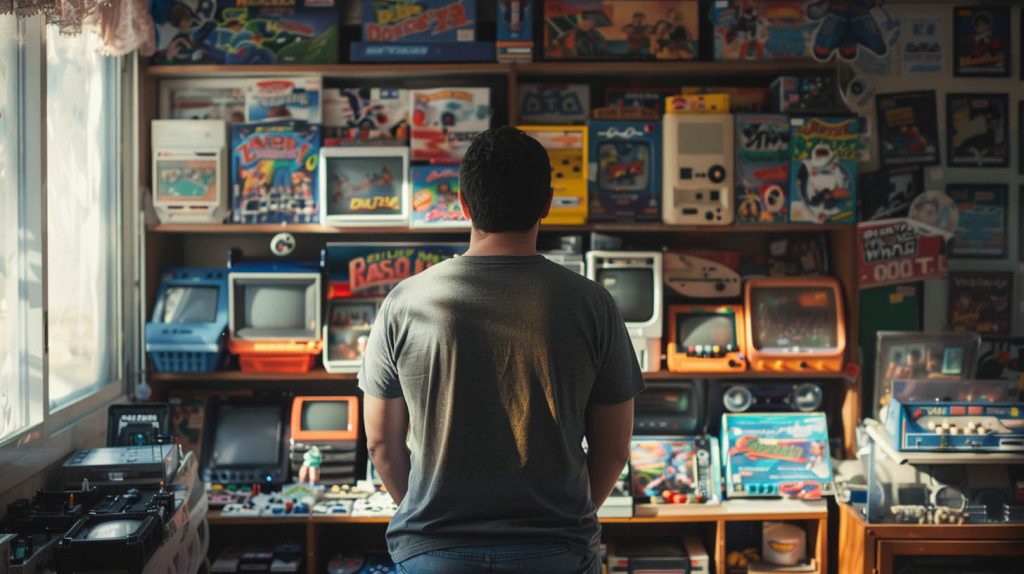When you buy through our links, we may earn a commission. Learn more.
Exploring the Allure of Vintage Lego Sets
Vintage Lego sets capture nostalgia and creativity, appealing to collectors and enthusiasts. These sets often hold a special place in our hearts, reminding us of our childhood adventures. We can explore their history, define what makes a Lego set vintage, and highlight some iconic sets that shaped the Lego landscape.
History of Lego
The Lego Group was founded in 1932 in Denmark. Initially, they produced wooden toys before shifting to plastic bricks in the late 1940s. The first version of their iconic brick was developed in 1958, featuring the unique stud-and-tube design that enhanced brick stability.
The introduction of the Lego minifigure in 1978 was revolutionary, adding personality and playability. Throughout the 1980s, the Lego Group expanded themes like Town, Space, and Castle, ensuring that their sets appealed to various interests. This era laid the groundwork for today’s beloved collections.
Defining ‘Vintage’
When we talk about vintage Lego sets, we refer to those produced primarily before 1990. These sets often have simpler designs, fewer pieces, and classic brick and knob configurations.
Some collectors consider sets from the 2000s as classic, but the term vintage is generally reserved for earlier products.
Vintage sets capture essential Lego characteristics, including bright colors and straightforward building techniques. These sets reflect the time they were created, allowing us to connect with the past through playful exploration.
Iconic Vintage Sets
Several vintage Lego sets have gained iconic status over the years. Here are just a few notable examples:
- Lego Castle (6073): Released in 1984, this set featured knights, horses, and a drawbridge, becoming a favorite for imaginative play.
- Lego Space (918): Launched in 1979, this space-themed set included a rocket and lunar rover, reflecting the 1970s fascination with space exploration.
- Lego Town (6350): This 1984 set allowed for creative city-building, showcasing cars, people, and various building types.
These sets remind us of simpler times and the joy of building with Lego bricks. The charm of vintage Lego sets continues to resonate with collectors and fans alike.
Acquiring and Caring for Vintage Lego
Collecting vintage Lego sets can be an exciting journey for enthusiasts. It involves not only finding desirable sets but also ensuring they are well-maintained to preserve their value and condition. Below, we will explore how to build a collection, where to buy sets, and how to verify their authenticity and value. We will also discuss proper maintenance and storage strategies.
Building a Collection
When we start building our vintage Lego collection, we should focus on specific themes or sets that interest us. This could include popular lines like Star Wars or Technic, or specific decades such as the 1980s.
Creating a checklist can help us keep track of which sets we want. We can list:
- Set names and numbers
- Year of release
- Estimated value
- Condition notes
Engaging with the Lego community through forums and platforms like Brickset enhances our knowledge. Participating in discussions allows us to find set reviews and recommendations from other collectors.
Where to Buy Vintage Lego
Finding vintage Lego sets can be done through various avenues. Online marketplaces like eBay and BrickLink are popular choices. On eBay, we can search for specific sets, check bids/offers, and explore daily deals.
Local brick-and-mortar shops or garage sales can also yield treasures. Sometimes, searching through thrift stores can lead to hidden gems. We should remain persistent and utilize our saved searches to catch new listings.
Additionally, we can explore platforms like the Brickset database for a comprehensive overview of sets. This helps us understand market trends and set our budget when making purchases.
Verifying Authenticity and Value
When buying vintage Lego, authenticity is crucial. Before completing a purchase, we should verify that the set is genuine. We can check for the Lego logo, original packaging, and the completeness of the set.
Researching the value is also important. Tools like Brickset provide a summary of recent prices for specific sets, helping us gauge fair market value. Joining discussions with Brickset members can also provide insights on pricing trends.
Taking measures to ensure authenticity can help us avoid counterfeit products, which may affect our collection’s value.
Maintenance and Storage
To keep our vintage Lego sets in top condition, we must be mindful of how we store them. It’s best to keep sets in a cool, dry place to prevent damage from moisture or extreme temperatures.
Using clear display cases or shelving can help showcase our collections while protecting them from dust. If we have loose pieces, storing them in labeled bins or bags keeps them organized.
Regularly cleaning our sets with a soft brush can remove dirt without damaging the bricks. We should handle them carefully to prevent wear and tear.
By following these guidelines, we can build and maintain a valuable collection of vintage Lego sets that brings us joy for years to come.
I’m Cartez Augustus, a content creator based in Houston, Texas. I’ve been exploring a variety of niches in content marketing in order to increase website traffic. I enjoy experimenting with artificial intelligence, search engine optimization, and paid search. The process of creating nerd-related content has been extremely rewarding since it has enabled me to network with people who are knowledgeable about these subjects.


